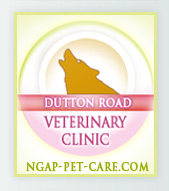 Corns in greyhoundsCorns are hard, painful areas which form on the pads of some Greyhounds. They are typically circular in shape and have a hard core that projects up into the pad causing a great deal of pain for a greyhound when standing, walking, and running. Corns can vary in size and location and can also appear in multiples. The exact cause is still unknown but they seem to be most prevalent and almost exclusive to greyhounds. Corn SymptomsSymptoms include lameness, limping, holding up a paw while standing, and a preference for walking on soft surfaces such as grass and carpet. Any limping greyhound should be checked for corns. Corn TreatmentAlthough there isn't a cure for corns, some corns do permanently disappear after treatment or on their own. For chronic or reoccurring corns, regular maintenance is the best way to ensure that your dog stays as pain-free as possible. The fastest and easiest way to help relieve the pain of corns is to cushion it. Special booties can be worn to protect the sensitive area of the pad while walking on soft and hard surfaces alike. Auburn University has taken this idea one step further by actually injecting fat into the affected area, thus cushioning it internally. Their hope is that it will prevent the reoccurrence of the corn. Human corn softener can be applied to soften the corn. Dremeling or filing the corn flat will help relieve the painful pressure on the inside of the pad. Unfortunately, in time, the corn will return along with the pain. This method provides only temporary relief but is a skill that can be learned and done at home. Shelling or hulling out the corn is a more extensive method of removal and one that should be done exclusively by your veterinarian. Removing more of the corn embedded deep within the pad, it allows for a longer period of temporary relief than other methods, without the expense and stress of surgery. Kill any offending bacteria in the area. This may help prevent the reoccurrence of problem corns. Corn SurgerySurgery, particularly laser surgery, is a more invasive way to remove corns. Corns can be deeply excised and the laser will cauterize the area as it cuts, as well as kill any harmful bacteria in the area. Finally, for severe corns, amputation of the affected toe is sometimes necessary. However, this should only be used as a last resort. Often, a new corn will appear on another pad. If it appears that there are already corns on other toes, amputation will only serve to aggravate the situation and is not recommended. |

|
|
||||||||
 |
| ||||||||

Please scroll down to the bottom of the page to see your results after entering your search criteria and clicking the search icon.

Please scroll down to the bottom of the page to see your results after entering your search criteria and clicking the search icon.
|
|
|||||||||||
National Greyhound Adoption Program © 2008 NGAP.org |
 |

Please scroll down to the bottom of the page to see your results after entering your search criteria and clicking the search icon.
| |
















